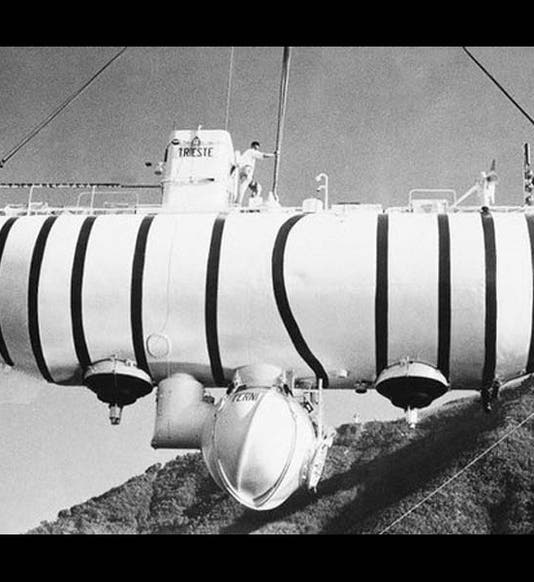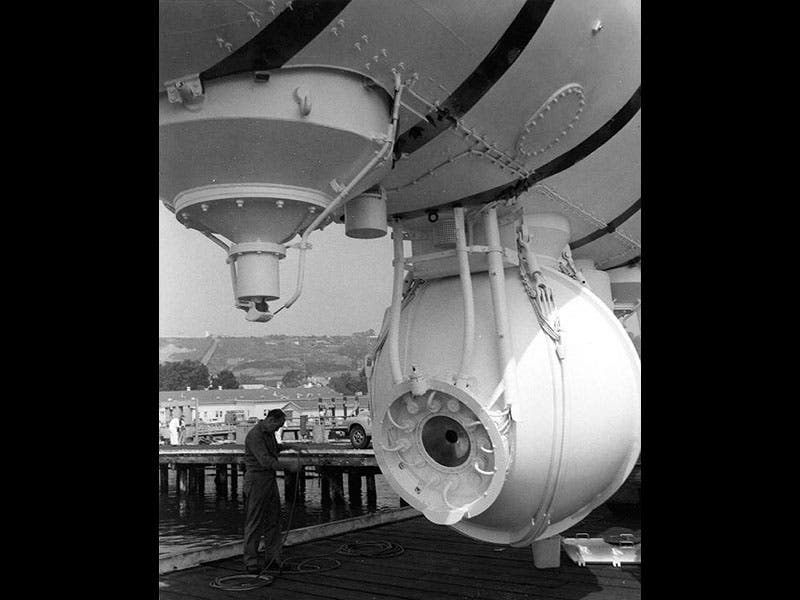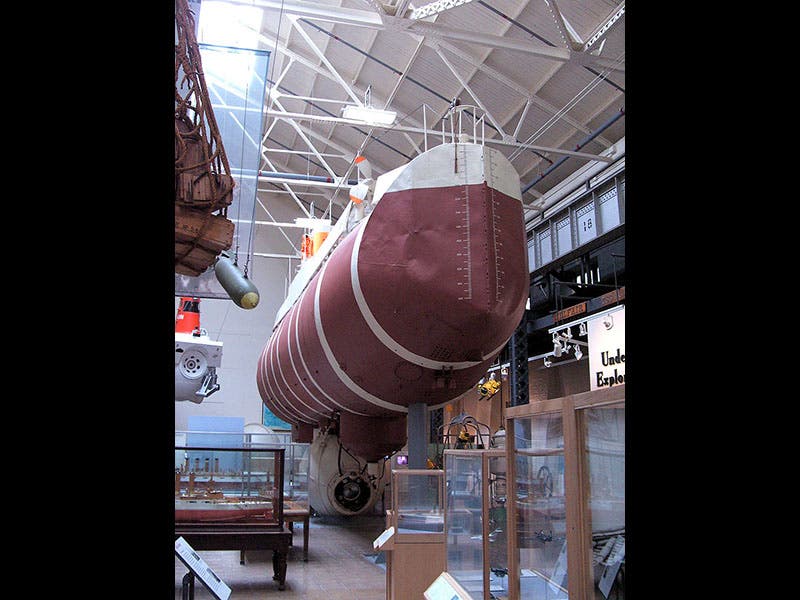Scientist of the Day - Jacques Piccard
Jacques Piccard, a Swiss engineer and oceanographer, was born July 28, 1922. Piccard's father, Auguste, was a famous aeronaut, having several times set the altitude record in a balloon in 1931, and Piccard chose to go the other direction and plumb the depths of the sea. His father had designed a special submersible vehicle called a bathyscaphe that could withstand the pressures of the deep. In 1953, a version was built in Italy that was named Trieste (first image). Jacques became its principal pilot. The Trieste had a thick-walled observation sphere at the bottom, for the crew of two, and the rest of the vessel was made up of buoyancy tanks filled with gasoline. The second image shows a close-up of the observation sphere with its single Plexiglas window; the hopper-like device in front was filled with iron shot that would be released to initiate ascent.
The Trieste was successful in its test runs in the Mediterranean, so it was purchased by the U.S. Navy in 1958, and Jacques went along with his ship as a consultant. On Jan. 23, 1960, Jacques Piccard and a Naval officer, Lt. Don Walsh, took the Trieste down to the bottom of the Mariana Trench in the Pacific Ocean near Guam (third image; Picard is on the right). The Trieste finally settled to the bottom at what Piccard estimated was a depth of 35,800 feet. It is still the deep-dive record, although three subsequent dives have more or less equaled it. It will be hard to exceed, unless we find a deeper trench in the Pacific.
The dive was not without its excitement. The Plexiglas window in the observers’ gondola cracked at the 30,000 foot level, and Piccard, fearful that the sphere might implode, decided to cut the stay at the bottom to about 20 minutes. Both men claimed to have seen flatfish and shrimp on the ocean floor, an observation generally discounted at the time, since most marine biologists were convinced that nothing could survive at such great pressure. Otherwise, the dive of the Trieste did not add much to scientific knowledge of the benthic ocean, since it had no collecting equipment nor did it make any kind of photographic record. But it certainly showed that exploration of the deep-sea ocean floor was possible.
Piccard went on to make other dives in other vessels, and the Trieste went its own way. A full-size replica took part in President Kennedy's inaugural parade in 1961 (fourth image). After being retired, Trieste was restored to service in 1963 to look for the lost nuclear submarine Thresher (which it found). Trieste was retired again, and finally ended up in the U.S. Navy Museum in Washington, D.C., where you can see it today (fifth image). Piccard died in 2008, at the age of 86.
Dr. William B. Ashworth, Jr., Consultant for the History of Science, Linda Hall Library and Associate Professor, Department of History, University of Missouri-Kansas City. Comments or corrections are welcome; please direct to ashworthw@umkc.edu.











